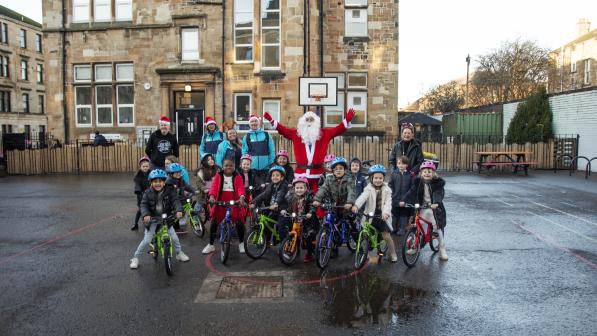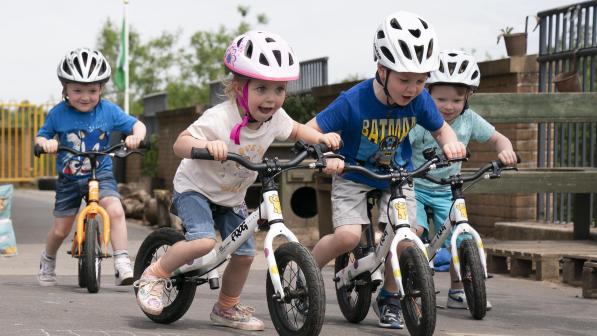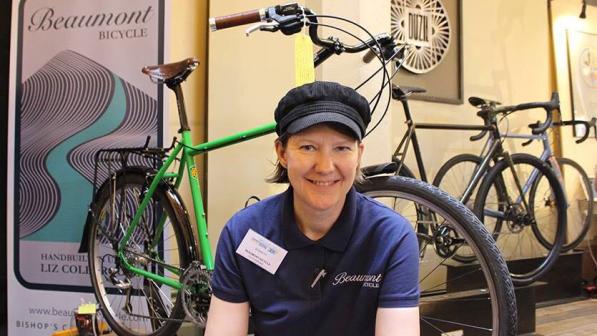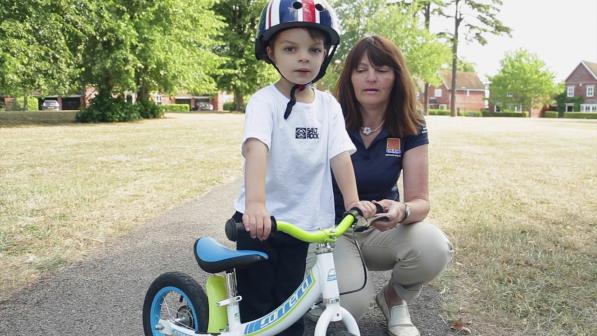Balance bikes vs scooters for toddlers

When I was in Hamburg, I walked passed a Kindergarten at playtime. Nearly all the children were whizzing up and down the play area on balance bikes and the adult supervisor was keeping a mobile eye on everyone on his scooter. Back in the UK, I wonder if an increasing number of parents are considering mini-scooters over balance bikes? Are scooters comparatively easier for children? Can a scooter teach balance? At first glance scooters look a quick, fun and easy solution to two-wheeled balance, but what’s the real difference between learning to ride and learning to scoot?
Why are balance bikes so popular?
The secret of a balance bike is that it breaks the skill of cycling into its component parts and focuses on balance taking pedalling completely out of the equation. From around two years old, a child has the potential to gain mastery balancing on two wheels steering intuitively by leaning. Perfecting the art of balance in this way is time well spent, as the cognitive skill of coordination needs another year or so to develop. You can’t ‘hothouse’ this skill but its all about being able to divide one’s attention, small scale multi-tasking! Come that day, your child has the potential to balance and pedal at the same time. Then with the right guidance and product, your child should make a smooth transition to riding a bicycle independently. Sometimes it happens in an afternoon with much excitement all round.
But is a scooter easier?
Hopping on and off a scooter is relatively quick to learn for two reasons. Firstly, the weight-bearing running board or ‘deck’ on a scooter is lower than the weight-bearing saddle on a balance bike and stepping onto it holding the tall handlebar to steady the rider is not such an unusual feeling as the child’s weight is still on its feet which feels familiar. Secondly, early years scooters have three wheels - two at the front and one rear - so the scooter stands up on its own (like the majority of children’s toys) making it easy to hop on and off.
You can use some scooters from around 12 months old (if the child is confidently walking), as they come with a seat and adapted lower circle handlebar. Between the ages of 1-2 years old all kinds of ride-on toys can help to encourage a toddler to explore and ultimately feel more confident when they move to a balance bike.

Why choose a balance bike if a scooter is easier?
It may take a little longer to learn the art of relaxing into the saddle and striding with alternate legs on a balance bike but a balance bike is also a key stage in learning to ride a bicycle. A balance bike has two wheels rather than three so your child must learn how to pick it up (as it doesn’t stand up on its own), hold it steady, balance on one leg and fling the other leg over to get on – an achievement in its own right, I say. This can challenge some children very productively helping them progress with skill acquisition. For others, it may take longer as it’s not familiar enough for them. With gentle encouragement and the chance to play with other children on balance bikes, it should be possible for nearly all children to learn to balance in motion. Once they have mastered the art, they soon show you how chuffed they are.
Core strength and other factors
Scooting and balance biking both provide a healthy exercise as an outdoor activity. Excluding trick scooter riding and balance bike pump tracks, most scooters and balance bikes will be used in parks with gently undulating stretches of tarmac. With significantly larger wheels, balance bikes can venture further afield enabling riders to explore places a scooter wheel will not go such as forest trails.
Scooting usually has the dominant leg on the ‘deck’ with the less dominant leg pushing to propel - but fear not, your child’s not going to develop ‘double-muscle’ on one side! The core (or trunk) may be engaged a little more with a scooter as the child is standing as opposed to sitting but the forward tilt towards the bars when balance biking means the core will also get a workout stabilising the thigh muscles as each legs works evenly to propel the young rider.
General spatial awareness, proprioceptive feedback and motor coordination will be encouraged with both. Also, an awareness of direction, speed, hazards and the planning skills needed to decide when to hop off or apply the brake. Ten years ago, balance bikes didn’t have a brake as the industry lacked the componentry suited to such small hands. Children would therefore start and stop with leg power. Children’s bike specialists Islabikes (where I used to work) were first to address this with their uniquely designed componentry for tiny hands.
Unforeseen benefits
We’ve talked about gross motor skills with upper body, core and lower limb strength and coordination. Fine motor skills are employed especially when using the smaller muscles of the hand. Introducing a child to these early on can give them a head start in learning how to gently squeeze or ‘feather’ the brake to slow down gradually.
Looking ahead, starting out on a balance bike opens the door to cycling and the potential to explore, take part in junior cycling events, learning self-sufficiency and enjoying family days out. Riding a bicycle can help develop confidence and self-efficacy and I have heard directly from parents that early mastery of balance biking has boosted their children’s confidence learning other new skills.
Price and value
The price of a scooter may be less than a balance bike but a scooter isn’t necessarily going to set a child up ready for a seamless transition into cycling. Once you’ve spent your money on a scooter, I’d argue that it’s unlikely to hold its value in the same way as a quality balance bike that can be fully serviced and passed on to the next sibling.
As a parent, grandparent or friend, don’t underestimate your part in being a role model. If you enjoy cycling, it can really inspire the children around you.
Liz Colebrook
Conclusion
How to compare a scooter with a balance bike? Both enable the wonderful feeling of motion, enjoyment of the outdoors and mastering a new skill set. Both present a child with its first form of independent transport. Although there are limitations to what a scooter can offer, the scooter route may be best for your child if a scooter has totally captured your child’s imagination. Far better to build confidence, friendships and self-efficacy through passionate enquiry than to ‘over-steer’ a child who may then dig their heels in and ‘not play’.
Scooters could spark an interest in cycling. I would say that children who start on balance bikes and progress to master riding a bicycle will have gained a greater number of physical and cognitive skills with the potential to easily expand their skill set through family and community cycling activities. If you can afford to, both are very useful, if you have to pick one, we'd recommend a balance bike.
Finally, what I celebrated seeing the adult playtime supervisor scooting with the Kindergarten in Germany was the visual message he gave to the children. Thumbs up to us all being part of a culture of enjoying balance and movement. As a parent, grandparent or friend, don’t underestimate your part in being a role model. If you enjoy cycling, it can really inspire the children around you.
Liz Colebrook is a member of Cycling UK and owns www.beaumontbicycle.com She worked for over a decade at Islabikes helping children and their families cycle.



